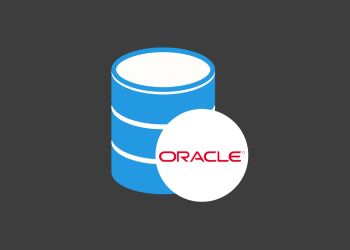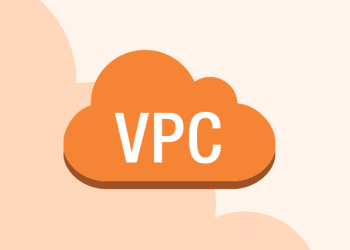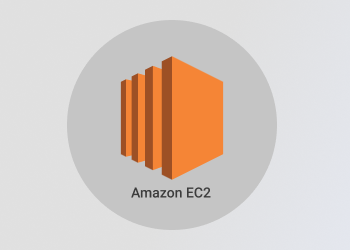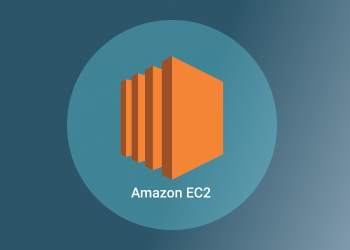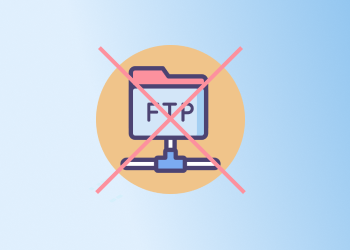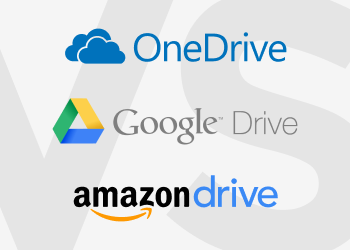Ransomware attacks are major threats for organizations across the board — but no two attacks are the same, in part because of the industry-specific challenges and risks that businesses face.
How to Back Up Oracle Database to Amazon S3, Microsoft Azure and more
Users who want to back up their Oracle databases to cloud storage using MSP360 Backup should take some extra actions to perform a cloud database backup.
How to Improve Security of S3 Buckets Using S3 Access Logs
Imagine the situation: you browse your Amazon S3 bucket and suddenly discover that some files are missing. Since Amazon S3 offers high durability, it leaves almost no chance for these files to disappear due to a system failure or disaster. Apparently, they were deleted by a user. How to find out who did that? Continue reading
Creating and Accessing Amazon S3 VPC Endpoint
We are always trying to stay on top of the new functionality introduced by Amazon. In this guide, we will describe how to create and access Amazon S3 endpoint in your VPC. Continue reading
GDPR Overview: Key Terms and Regulation Summary
Businesses based in the European Union or businesses outside the EU working with EU citizen data are currently marking their calendars for May 25, 2018. That’s when GDPR is coming.
In this article, we will provide a general GDPR overview including the main terms and regulations that you should be aware of.
Ransomware on Mac. Does It Exist?
One of the most annoying types of virus types nowadays is Ransomware – malicious software that locks files or a computer until its owner pays a ransom for decryption. Windows users do a lot of things to protect their files, but how about for Macs? Should Mac users be worried about such virus types? In this article, we are going to reveal the answer. Continue reading
When to use Amazon Cloudfront or Amazon S3?
Amazon S3 and Amazon Cloudfront are different in their nature thus can’t replace one another. Amazon S3 is a cloud object storage suitable for hosting static websites and make the objects available for remote access. While Amazon Cloudfront is a content delivery network (CDN), designed to work with Amazon S3 origins to decrease latency and improve user experience by serving content faster and through the encrypted connection.
Despite the technical background, these two services are often confused. The article highlights the benefits of using Amazon Cloudfront in conjunction with Amazon S3 and helps you to decide whether or not you need to distribute the content through the network (and spend more money).
Amazon S3 and Amazon Cloudfront: Working Principles
The best way to think about Amazon S3 is as an unlimited hard drive located in the Internet. When configured for static website hosting, the storage makes hosted content available globally. But it doesn’t mean that website data is located close to the end user. So, to view a file hosted on Amazon S3 in US-East-1 N. Virginia region from London, user experiences a delay in content delivery due to high latency.
Amazon Cloudfront allows to distribute your website across the globe by caching (replicating) the data from Amazon S3 host and then deploy it for viewers using the nearest network server (i.e. edge location). If used in a previous example, the Cloudfront receives user’s request, consults the host server in N.Virginia and sends missing object cache to the nearest edge server in the UK. Next user, who has request the same object, receives the cached copy. This results into significant increase in loading speed of the page and separate objects like PDFs or images.
HTTP, HTTPS (SSL) in Amazon S3 and Amazon Cloudfront
One of the major differences of pure Amazon S3 hosting is utilizing only HTTP protocols. It actually might hurt your website security in a way objects are delivered through unencrypted connection. Although you still can restrict certain users or regions from accessing objects by editing Bucket Policies and Access Control List.
The workaround in this case is to use Cloudfront, because it fully supports SSL certificates and HTTPS access that can be configured by changing cache behavior. Three options are available at this point:
- Allow using both HTTP and HTTPS to choose which objects are only accessible via HTTPS
- Redirect HTTP requests to HTTPS
- Use only HTTPS to access hosted objects

Amazon Cloudfront: HTTP Live Streaming or RTMP Connection
As mentioned above, user suffers from an increased latency when tries to access the requested content through Amazon S3 from different region. This makes it impossible to stream live video and audio podcasts, which require real time operations with the data.
Cloudfront has two options to provide quality live streaming:
- Cloudfront Live Streaming (HTTP)
- Adobe Flash Media Server protocol (RTMP)
Both can be used separately or in conjunction, but you need to create a new distribution for each protocol.
Note: If you need to use simple HTTP streaming, choose Web Distribution type. Otherwise when you need to leverage streaming through RTMP protocol, use the RTMP Distribution.

Using Alternate Domains
As a rule of thumb, Amazon S3 uses only one CNAME for alternative domains thus it’s not suitable for using subdomains for different sections of the website.
By the time I wrote this article, Amazon Cloudfront limits the number of alternate domains to 100 making it the best use for websites with architecture that heavily rely on subdomains.
Amazon S3 and Amazon Cloudfront Pricing
Both solutions are stick to pay-for-what-you-use pricing formula like any other by Amazon Web Services. In case of Amazon S3 hosting, the major item of expenditure is storage based on the current tier you are utilizing. Next thing to consider are Put, Copy, Post, List, Get and other requests that are also billable. For more details on Amazon S3 pricing check out our article.
Amazon Cloudfront charges webmasters for each GB delivered to the end user and it also depends on the amount of data you deliver per region. Receiving HTTP requests is cheaper than HTTPS requests, so think it through before determining protocols. Object invalidation is free up to 1,000 attempts and then result into additional fee. Custom SSL certificate will cost $600 for each domain and dedicated IP also comes for additional payment. AWS also use so-called price classes, which describe desired availability of content in specific edge locations.
For example, if your budget can’t be stretched to allow multiple downloads from Asia-Pacific region edge, you can allow to use Sydney or North America edge to minimize costs. Look at Cloudfront pricing page for more information.
To summarize the article we’ve prepared a few use cases that help you to better understand when you can benefit from Amazon Cloudfront content delivery and the same for using pure Amazon S3 hosting.
Amazon S3
- Localized audience (country, region, continent)
- Objects don’t need a secure connection
- Frequently changed objects
Amazon Cloudfront
- Low latency on loading service, app or web page
-
Objects that change with mid-frequency
Further Resources on MSP360
Linux offers great advantages but is not always the right solution for MSPs. Below are four reasons why Linux may not work well for your MSP business. To stay competitive, MSPs must prioritize 5 ways 5G networking opens new frontiers for MSPs, from edge computing migrations to real-time device backups that minimize downtime in distributed IT operations. Implementing 6 ways to minimize downtime in IT operations through proactive monitoring and hybrid strategies is essential, particularly when paired with advanced enhanced hybrid backup features in tools like MSP360 Backup, which now include new real-time backup functionality for near-continuous data protection. Yet, amid rising cyber threats, asking are you doing enough for cybersecurity prompts a deeper dive into adopting a security-first approach, where strategies like air-gap vs. immutable backups provide ransomware-resilient layers. For cost-effective archiving, transitioning to AWS S3 Glacier storage class instead of AWS S3 Glacier vaults offers a step ahead in scalability, while developers managing Azure resources might debate Azure CLI vs. PowerShell for automation efficiency.
Ultimately, driving growth requires 5 ways to improve sales and marketing, from refining service catalogs to highlighting unique value propositions like those validated in the Backup review by Lawrence Systems, ensuring MSPs not only survive but thrive in a security-conscious ecosystem.
Amazon EC2 Pricing Explained
Getting the most out of Amazon EC2 instances requires not only choosing the right EC2 instance type or performing Amazon EC2 backup, but, first of all, identifying the best EC2 pricing strategy. Continue reading
EC2 Instance Types: Choosing the One That Is Right for You
AWS offers nearly fifty different types of EC2 instances. It also provides a number of different categories of images, each tailored for different use cases.
Choice is a good thing and having so many EC2 instance types and categories is a benefit to users. But with so many possibilities, deciding which EC2 instance is the best fit for your needs can be a challenge. Continue reading
Open-Source FTP Alternative for Your Business
Here at MSP360, we help small and mid-size service providers simplify the daily management process for their consumers. Most of the partners work with public cloud providers, but sometimes we see interest in using local storage facilities for backups. MSP360 Backup discontinued support of all FTP family and here is why. Continue reading
How to Use Amazon S3 Cost-Effectively
The benefits of Amazon Web Services are directly proportional to the number of ways to use it. It’s not unusual for the business to allocate a limited budget on cloud storage, but never use it to the max. Then it turns out the company uses several paid solutions for a bunch of tasks that can be accomplished with AWS.
We’ve prepared an Amazon S3 use case list that will help you take the most out of it in your workflow.
Continue reading
Microsoft OneDrive vs Google Drive vs Amazon Drive
We continue discovering cloud storage services. Recently we published an article about Microsoft OneDrive and Azure services, and today we will explore and compare the three most popular cloud drive products: OneDrive vs Google Drive vs Amazon Drive. Continue reading






